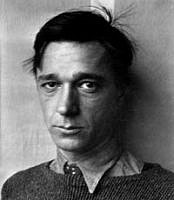BIOGRAPHY

1903-1975
Born to an affluent family in St. Louis, Walker Evans began making photographs as a child, and continued as the family moved to Chicago and subsequently Ohio. After a brief stint at Williams College, Evans moved to New York, where he planned to become a poet and novelist, which he ultimately decided against. By 1929 he was making ambitious photographs of the city's skyscrapers and machinery and returned to his interest in Atget's work, whose sparse photographs of fin-de-siècle Paris greatly resonated with his growing disdain for aesthetic gimmickry. Inspired, Evans began to delve even deeper into photography and was soon publishing his work and receiving commissions for photo series.
His seminal work for the Farm Security Administration (FSA) — unflinching portraits of American farmers taken primarily with an 8 x 10 camera; expressionless with pain emanating through eyes, skin and pores — earned him a 1971 MoMA retrospective. Evans’ photographs told the story of American working-class life with an exacting frankness that was truly revolutionary for its time. His iconic portrait of Allie Mae Burroughs - a farmer's wife, and mother of four - whose unforgettable eyes seem to stare right through us - is one of the most firmly embedded images in American consciousness. A staffer at Fortune and Time magazines, Evans actually reached the height of his powers toward the end of The Great Depression. Drawing deeply on the American literary tradition, he went further than others in his refusal to romanticize poverty. While they might look like protagonists from American Realist novels (those by William Faulkner or John Steinbeck, for example), his men and women are real people, more firmly immortalized because it takes more time to read a book than see a photograph. Widely acknowledged as one of the greatest photographers of his time, Evans's forthright approach to portraiture and documentary redefined these genres for generations to come, and shaped how a nation remembers itself.
